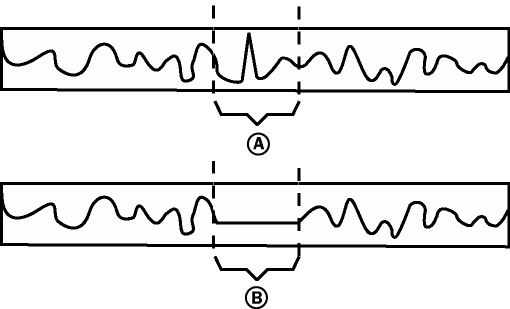Partial occlusion may generate noise or a misinterpretation of the marker’s position when either a sensor is placed too close to another on the performer’s body, or when a sensor is partially hidden from one of the cameras.

A. Sensor tracked and recorded correctly B. Sensor partially occluded C. Sensor tracked correctly
If you examine the data generated by a sensor that has been partially occluded as shown in the preceding figure (B), you can see peaks, shifts, or noise. These are commonly found just before a sensor becomes fully occluded.
In these cases, the data is good on either side of the noisy part of the data segment, so you need a way to trim out only the noisy portion of the function curve, and keep the correct data on either side.
The Optical tool lets you split a data segment into two segments, so that you can keep the data you want and discard the noise as shown in the following graphic.

A. Artifact in an otherwise correct curve B. Artifact removed and gap filled by constant interpolation between the data segments
Recognizing artifacts (unnatural data effects) demands careful analysis of the data segment at the point where the marker begins to move erratically. Playing back the take at a slow speed is a good way to find where the markers begin to drift, jump, or shift.